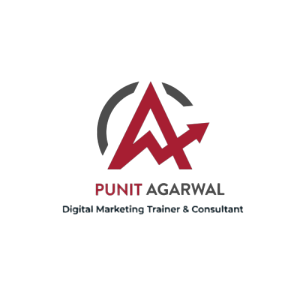In the dynamic world of SEO, mastering Domain Authority and Page Authority is akin to holding the keys to online success. By understanding and optimizing these metrics, your website can emerge as a dominant force in search engine results. The journey to Google supremacy begins with a strategic approach to content, backlinks, and technical optimization.
Alt Tag (Alternative Text):
Alt tags are HTML attributes added to image tags, providing textual descriptions for images on webpages. They play a vital role in web accessibility and SEO. For instance, an e-commerce website selling red sneakers might use an alt tag like “Red Sneakers – High-Quality Athletic Shoes.” This not only aids visually impaired users but also enhances the image’s relevance to search engines. Alt tags contribute to better image search visibility and overall webpage SEO. For more information on alt tags and their importance, refer to Google’s official documentation: Google – Use descriptive alt text.
Header Tag Optimization:( SEO)
Header tags, like H1 and H2, structure content for both users and search engines. Optimizing them involves placing relevant keywords strategically to convey content hierarchy. For instance, in an article about “Healthy Recipes,” the H1 tag could be “Delicious and Nutritious Recipes,” emphasizing the primary topic. Subsequent H2 tags might include “Breakfast Ideas” and “Vegetarian Options,” guiding both readers and search engines through the content. A practical example of effective header tag optimization can be found on the Moz blog (https://moz.com/learn/seo/header-tags). Their well-organized use of header tags contributes to a clear and SEO-friendly structure, enhancing user experience and search engine visibility.
Image optimization is crucial for faster webpage loading and improved SEO. Reducing image file sizes without sacrificing quality is key. For instance, on an e-commerce site selling clothing, optimizing product images ensures swift loading, enhancing user experience. An example showcasing effective image optimization can be found on Shopify’s guide (https://www.shopify.com/blog/7412852-10-must-know-image-optimization-tips), offering practical advice on compressing images, choosing the right file formats, and ultimately speeding up page load times. This optimization not only benefits user engagement but also positively influences search engine rankings, contributing to overall website performance.
Cannibalization:
Keyword cannibalization occurs when multiple pages on a website compete for the same keyword, diluting search engine rankings. For example, if an e-commerce site has two pages optimizing for “affordable running shoes,” search engines may struggle to decide which page to prioritize. This leads to suboptimal rankings for both. To avoid cannibalization, clearly assign unique keywords to each page. A real-world example can be observed on the Ahrefs blog (https://ahrefs.com/blog/keyword-cannibalization/), where they discuss how to identify and resolve keyword cannibalization issues, ensuring better search engine visibility and improved rankings.
Canonicalization:
Canonicalization is crucial to resolve issues of duplicate content across websites or pages within a site. By using canonical tags, you guide search engines to the preferred version of a page. For instance, if different URLs lead to the same product page, you can designate one as canonical. A practical example is on the official Google Webmasters blog (https://webmasters.googleblog.com/2009/02/specify-your-canonical.html). Google advises on canonicalization, emphasizing its role in ensuring that search engines understand the preferred version of content, ultimately preventing potential SEO issues related to duplicate content.
Keyword Proximity in SEO:
Keyword proximity gauges the closeness of keywords within content, impacting how search engines interpret relevance. For instance, in an article about “Green Energy Solutions,” effective keyword proximity involves placing related terms like “sustainable energy” and “renewable resources” in close proximity. This enhances the content’s context for search engines. Explore keyword proximity in action on Neil Patel’s blog (https://neilpatel.com/), where articles seamlessly integrate related terms, aiding both user comprehension and search engine ranking algorithms. The strategic use of keyword proximity contributes to well-optimized content, aligning with SEO best practices for improved visibility.
Robots.txt with SEO:
Robots.txt is a file instructing search engine crawlers which parts of a website to crawl or avoid. Employing this tool strategically is crucial for controlling a site’s visibility in search results. For example, to prevent search engines from indexing sensitive information like login pages, a robots.txt file could include directives like “Disallow: /login.” An excellent resource for understanding and implementing robots.txt effectively can be found on Google’s support page (https://support.google.com/webmasters/answer/6062608). It outlines best practices, helping webmasters optimize crawl efficiency and manage content accessibility for improved SEO.
What is Sitemap in SEO ?
A sitemap is a structured list of all pages on a website, aiding search engines in comprehending and navigating site content. It plays a crucial role in SEO by ensuring efficient crawling and indexing. For instance, the sitemap of a blog may list categories like “Technology,” “Health,” and “Travel,” providing search engines with a roadmap to the site’s thematic landscape. Explore the benefits of a well-structured sitemap on the Yoast website (https://yoast.com/what-is-an-xml-sitemap-and-why-should-you-have-one/), where they emphasize how sitemaps enhance SEO, helping search engines better understand and rank content.
URL Structure:
A well-organized URL structure is crucial for user experience and search engine optimization. For instance, in an online shoe store, a clear URL like “example.com/women/shoes/running” is more informative than a generic one. It aids users in understanding the page content and assists search engines in categorizing and ranking the page appropriately. Amazon exemplifies this with its structured URLs, like “amazon.com/electronics/cameras” (https://www.amazon.com/electronics/cameras). The descriptive hierarchy benefits both users and search engines, contributing to a seamless browsing experience and improved SEO rankings.


